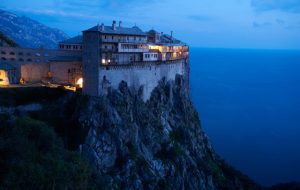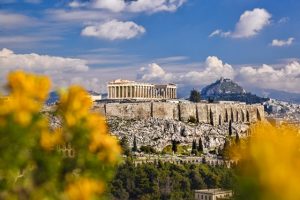If you are planning to visit Greece, there are two things that you should definitely bring with you: a high-quality digital camera to capture breathtaking sceneries and a high-capacity memory card to store as many pictures as you can!
The destinations described below are only indicative of the uniqueness of Greek landscapes. Although it is hard to choose, here are six of the most photogenic and most photographed spots in Greece:
Santorini, Cyclades: The crescent shaped gem of an island is one of the most sought after destinations in the world! Here, from the picturesque villageof Oia, perched on the rim of a massive caldera in the middle of the sea, you will have the chance totake amazing pictures. The rose-hued sky during sunset offers the perfect backdrop to create your personal picture-postcard snapshot.

Mount Athos, Halkidiki: The monastic self-governing community of Mount Athos lying in a peninsula in Northern Greece offers spiritual enlightenment to those seeking insight and inspiration. Twenty monasteries – keepers of the orthodox faith – perched along the peninsula make out an outstanding landscape of unique natural beauty that has been declared a UNESCO World Heritage Site. Ideally take your picture at sunrise, whenthe first light of dawn gently defines the area, and the sunrays warm up the monastery walls.

Balos, Crete: Definitely one of the best beaches in the world; bask in turquoise waters lapping against sandy strips of landand savour an eye-catching landscape, a colourful palette with all shades of blue and green that it’s hard to describe in words. Any time of the day offers a lovely setting to take your picture against; morning and early afternoon scenes though, when the white sunlight sets off the landscape, can be particularly inspiring.

Acropolis, Athens: The greatest and finest sanctuary of ancient Athens; a UNESCO World Heritage Site; Athens’ landmark and the city’s most photographed site! Capture its grandeur late in the evening when the illuminated monument proudly overlooks the city against the dark Athenian sky.

Read more HERE
Ask me anything
Explore related questions





